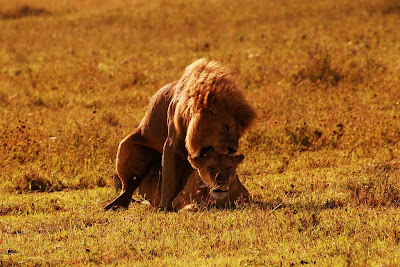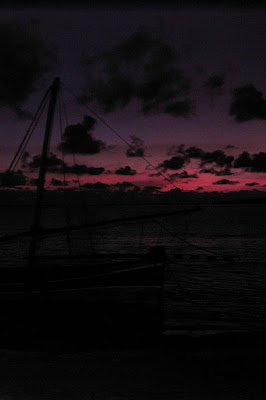So, joined by my intrepid sidekick Adonis J, we set off for five days in Arusha, Serengeti and the Ngorongoro Crater. It was one of my most incredible safari trips to date - and fortunately my parents got to see the big five plus some. Mom liked the elephants, Pops dug the Cape Buffalo, Adonis J and I both like the dik-dik.
I took literally thousands of pictures over the course of our visit, but as no one has the patience of that (except for maybe Alice!), I have culled and categorized them for your viewing simplicity.
Lions
Everyone likes lions, and man-oh-man did we see lots of lions. Sleeping lions, walking lions, copulating lions, lions in the road, lions under trees, lions in trees, lions on roads, lions in the grass... They walked close enough to the safari car, that in many circumstance, should you have been interested in a rather unique obituary in the local paper, you could have reached out and slapped one on the ass. There was also one particularly memorable moment where, having interrupted two lions getting busy, we got stuck in the sand while the male lion glared at us from a few feet away. We sat there for awhile wondering how this was all going to turn out (and listening to what I assume was a steady stream of Swahili obscenities from the driver), until another car came by and was able to block the lions' view long enough for the guide to hop out, kick gravel under the tires, and hop back in. Quickly. In any case, here are the lion pictures:
Leopard
We only saw one leopard and it was a bit camera shy. Though I do like the shot of the Reebok in the tree.
Cheetah
While not quite as many as the lions, we saw a bunch of these guys as well. Including one that spent a good chunk of the morning making some zebra very uncomfortable.
Civet Cat
Rounding out the big cats on our virtual safari is the civet cat. It is about the size of a extra large house cat and would certainly guarantee that your house didn't have any rats. Or squirrels. Or spaniels.
Hyenas and Vultures
Much like no matter how many baseball games I go to I never catch a foul ball, no matter how many safaris I go on, I have never seen a kill. This is as close as we came this trip, it vultures and hyenas finishing the job.
Elephants
We saw lots of elephants. They tend to go pretty much wherever they feel like - and particularly seem to like the ease and convenience of walking on main roads instead of tramping through the bush. Multiple times we had to stop so the elephants could finish crossing, including once where an old male was oncoming traffic. Again, close enough to touch.
The Herds
We were lucky enough to be in the Serengeti for the "reverse migration." While not as impressive as the regular migration - which involves thousands of animals squeezing through narrow bottlenecks on the quest north, the reverse migration - where everyone is headed back south again - is still quite impressive. Below are the best of all things hoofed.
Hippo and Rhino
One plentiful, one rare, the fat boys are getting lumped together because I didn't get much in the way of good pictures of them.
One Miscellaneous Agama Lizard
I like the lizards and this was the only one that held still long enough to get his picture taken.
Maasai
Sometimes, as a daughter, you just need to stand back and let your parents learn life's lessons the hard way. The Maasai village was one of those times. My mother developed a bit of a fetish of the exotically dressed traditional warriors native to the Serengeti. That was quickly cured with a Maasai "village tour" which included a brief introduction to Maasai culture, then full blown hard sell buy-my-crap routine. But after only an hour in the people zoo, my mother was cured. And I got some great pictures, both of the Maasai villages, and my parents.
That was it for the safari portion of this vacation. Yesterday we flew from Arusha out to Stone Town in Zanzibar, and a headed to the beach for the rest of the week. You can look forward to nothing but sunsets and nudibranches in the next post.



















































